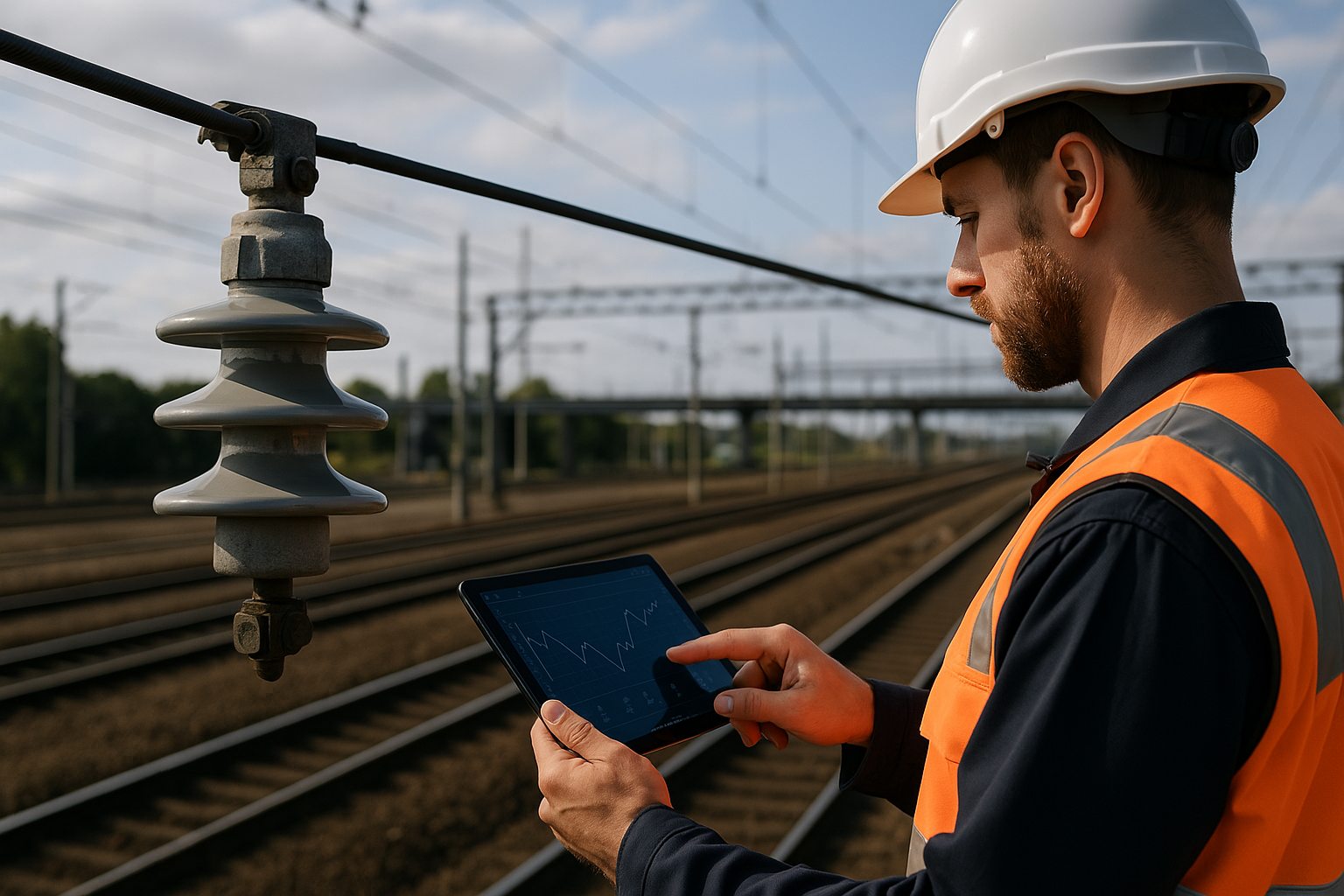Sensor Technologies for Monitoring Railway Insulators
The use of sensor technologies is essential for monitoring the performance of railway insulators. These technologies enable early fault detection and predictive maintenance, which are crucial for the safety and efficiency of the railway system.
Temperature sensors are one of the most commonly used technologies. These sensors help identify anomalous temperature changes that may indicate a problem with the insulator. Elevated temperatures can be a sign of electrical overload or material deterioration.
Additionally, humidity sensors are essential for detecting the presence of water or moisture in insulators. Excessive humidity can reduce the effectiveness of the insulator and increase the risk of electrical failures.
Finally, vibration sensors are used to monitor the movement and vibrations in insulators. Unusual vibrations can indicate structural or installation issues.
- Temperature sensors
- Humidity sensors
- Vibration sensors
Examples of Sensor Applications
In a recent study, temperature and humidity sensors were implemented on a high-speed railway line. The results showed a 30% reduction in failures thanks to early problem detection.
Remote Monitoring and IoT Systems
Remote monitoring through Internet of Things (IoT) systems has revolutionized the way railway insulators are supervised. These systems allow real-time data collection and continuous analysis of the insulators’ conditions.
IoT devices can send automatic alerts when anomalous conditions are detected, allowing maintenance teams to act quickly to prevent failures.
Moreover, IoT facilitates the integration of data from multiple sensors, providing a holistic view of the insulators’ status and enabling more precise analysis.
Remote monitoring also reduces the need for frequent physical inspections, which lowers operational costs and improves maintenance efficiency.
- Real-time data collection
- Automatic alerts
- Integration of data from multiple sensors
Success Stories in Using IoT
A European railway operator implemented an IoT system for monitoring their insulators, achieving a 40% reduction in downtime due to electrical failures.
Data Analysis and Predictive Algorithms
Data analysis is a crucial part of monitoring railway insulators. Predictive algorithms use historical and real-time data to foresee potential failures before they occur.
These algorithms can identify patterns and trends that are not immediately evident, allowing operators to anticipate problems and plan maintenance more effectively.
The use of data analysis also enables resource optimization, as maintenance can be scheduled more efficiently, avoiding unnecessary interventions.
Additionally, predictive algorithms can enhance safety by reducing the risk of unexpected failures that could cause accidents or service interruptions.
- Identification of patterns and trends
- Resource optimization
- Safety enhancement
Implementation of Predictive Algorithms
In a pilot project, a railway company used predictive algorithms for maintaining their insulators, achieving a 25% reduction in maintenance costs.
Automated Visual Inspection
Automated visual inspection is another key technology for monitoring railway insulators. Using cameras and image recognition software, it is possible to detect physical damage or wear on insulators.
This type of inspection allows for a quick and accurate assessment of the insulators’ condition without the need for direct human intervention.
Cameras can be installed on drones or inspection vehicles, facilitating access to hard-to-reach areas and reducing risk for maintenance personnel.
Moreover, image recognition software can be trained to identify a wide range of defects, from cracks to dirt accumulation, enhancing monitoring effectiveness.
- Cameras and image recognition software
- Quick and accurate assessment
- Risk reduction for personnel
Advancements in Visual Inspection
A study demonstrated that automated visual inspection can detect defects with a 95% accuracy, surpassing the capabilities of traditional manual inspections.
Communication Technologies for Monitoring
Communication technologies are essential for effective monitoring of railway insulators. Wireless communication enables data transmission from sensors to control centers in real time.
The use of advanced communication networks, such as 5G, improves the speed and reliability of data transmission, ensuring that critical information reaches operators without delays.
Additionally, communication technologies allow for system integration, facilitating coordination between different teams and departments involved in the maintenance and operation of the railway system.
Effective communication is also crucial for a quick response to emergencies, enabling maintenance teams to act immediately when problems are detected.
- Wireless communication
- Advanced networks like 5G
- System integration
Impact of Advanced Communication
A railway operator that implemented advanced communication technologies reported a 50% improvement in the efficiency of their monitoring system.
Challenges and Future of Insulator Monitoring
Despite technological advances, monitoring railway insulators faces several challenges. One of the main challenges is interoperability between different systems and technologies, which can complicate data integration and analysis.
Additionally, cybersecurity is a growing concern, as monitoring systems are vulnerable to attacks that could compromise railway system safety.
Another challenge is the implementation cost, as installing advanced technologies can be expensive, especially for operators with limited budgets.
Despite these challenges, the future of insulator monitoring is promising, with the continuous development of new technologies and methods that will improve monitoring effectiveness and efficiency.
- Interoperability
- Cybersecurity
- Implementation cost
Future Innovations
It is expected that innovations in artificial intelligence and machine learning will play a crucial role in the future of insulator monitoring, allowing for a more precise and rapid problem detection.
Monitoring the performance of railway insulators is essential to ensure the safety and efficiency of the railway system. Sensor technologies, remote monitoring through IoT, data analysis and predictive algorithms, automated visual inspection, and advanced communication technologies are key tools in this process. Despite challenges like interoperability, cybersecurity, and implementation cost, the future of insulator monitoring is promising thanks to continuous technological innovations. These technologies not only improve fault detection and prevention but also optimize resources and reduce operational costs, ensuring a safer and more efficient railway system.
